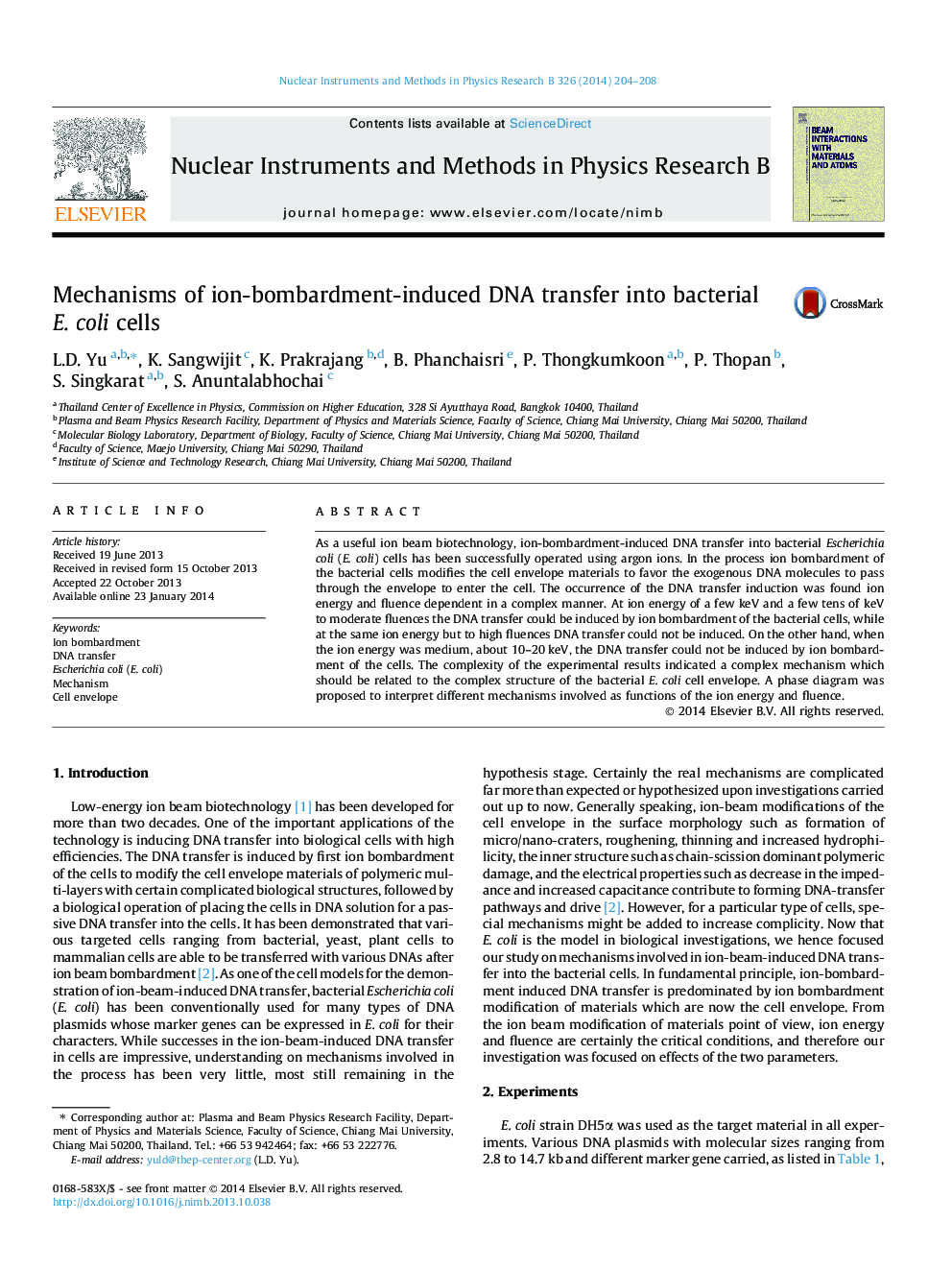| Article ID | Journal | Published Year | Pages | File Type |
|---|---|---|---|---|
| 1681051 | Nuclear Instruments and Methods in Physics Research Section B: Beam Interactions with Materials and Atoms | 2014 | 5 Pages |
•Ion bombardment could induce DNA transfer into E. coli cells.•The DNA transfer induction depended on ion energy and fluence.•The mechanism was associated with the bacterial cell envelope structure.•A mechanism phase diagram was proposed to summarize the mechanism.
As a useful ion beam biotechnology, ion-bombardment-induced DNA transfer into bacterial Escherichia coli (E. coli) cells has been successfully operated using argon ions. In the process ion bombardment of the bacterial cells modifies the cell envelope materials to favor the exogenous DNA molecules to pass through the envelope to enter the cell. The occurrence of the DNA transfer induction was found ion energy and fluence dependent in a complex manner. At ion energy of a few keV and a few tens of keV to moderate fluences the DNA transfer could be induced by ion bombardment of the bacterial cells, while at the same ion energy but to high fluences DNA transfer could not be induced. On the other hand, when the ion energy was medium, about 10–20 keV, the DNA transfer could not be induced by ion bombardment of the cells. The complexity of the experimental results indicated a complex mechanism which should be related to the complex structure of the bacterial E. coli cell envelope. A phase diagram was proposed to interpret different mechanisms involved as functions of the ion energy and fluence.
